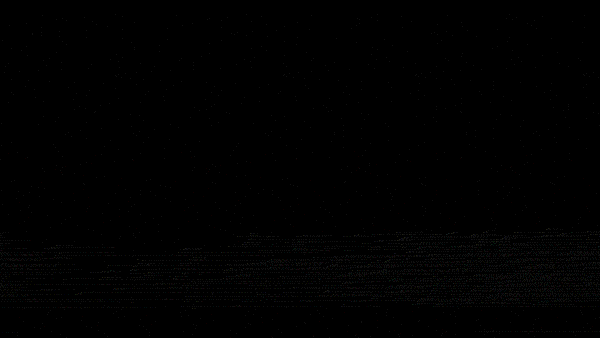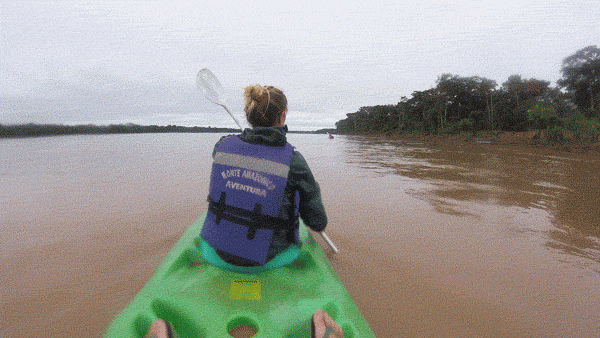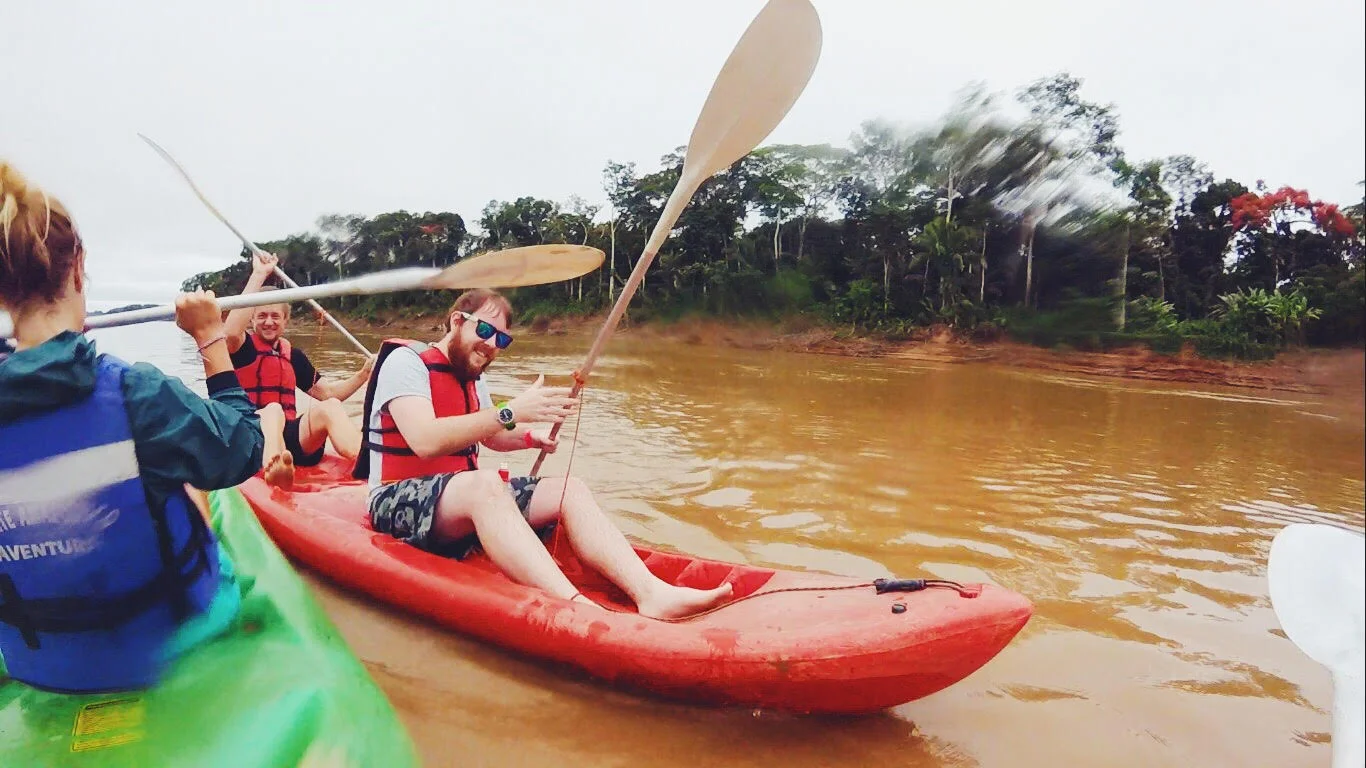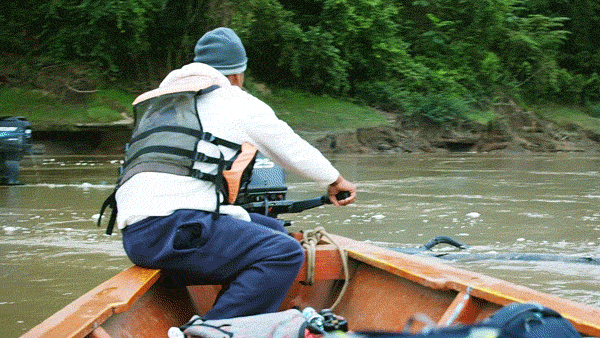Puerto Maldonado – Into the Jungle
After visiting Machu Picchu we wanted to get our fix of wildlife during our time in Peru, so during our time in Cusco we visited various tour agencies to find a good deal. We decided on the Tambopata National Reserve, accessed through Puerto Maldonado, a dusty and slightly run down city in southeastern Peru. Getting there was much cheaper on land than by air, so after a fairly comfortable 12 hour night bus from Cusco we arrived at the bus terminal in city centre. During our 4 day tour at Monte Amazonico Lodge we were promised abundant wildlife including giant river otters, anacondas and macaws. Knowing wildlife can be very temperamental, we tried to manage our expectations on our journey there, but were excited for another chance to try and glimpse more of the South American wildlife none-the-less.
After arriving into Puerto Maldonado early morning we were picked up by our tour agency and driven to the office to finalise our itinerary and grab a quick bite to eat. Shortly after we met with the rest of our group, boarded a long boat and set off down the Madre de Dios River, and within thirty minutes we had pulled up to our jungle lodge situated right on the river bank. With a huge central common area complete with a pool and foosball table, kitchen and bar as well as double rooms set amongst a forest clearing, we were pretty impressed with the place! It was a great base to spend our adventures in the jungle for the next 4 days.
Day 1
First on the tour agenda was a forest walk with our guide, Tito, a local Peruvian who clearly had a lot of experience and knowledge of the jungle and its inhabitants. As we congregated outside the lodge we were greeted by a lively wild pig (a white-lipped peccary), who was very friendly and joined us on our walk. As we set off (admittedly not far from the lodge at first) Tito began to explain about the various plants that were native to the Peruvian jungle, and the way in which the locals used them for medicine and building materials, as well as the dangerous ones to avoid! We also learnt that the soil is actually very shallow and nutrient-poor in the jungle, and how the trees and plants overcame issues of stability and water collecting by having widespread roots, such as buttress roots.
One of the most interesting trees was the 'walking palm', a tree which literally moved as it grew new roots in search of nutrients. We realised very quickly that we had to be very careful where we put our hands, as many of the trees had spikes and toxins. Another really interesting three was the cecropia, found in a little clearing with no other plants around it. We learnt that it had a symbiotic relationship with the cecropia ants, and as soon Tito tapped the tree an army of ants came out of the trunk to attack, acting as a defence for both their home and the tree. Many of them actually ended up biting him, which although looked a bit painful, was difficult not to find a little bit funny! We then continued deeper into the jungle, spotting many interesting insects and spiders along the way, and even came across a giant millipede.
After an hour or so of walking through the jungle we arrived back in the lodge for a tasty three course lunch and had a quick swim in the pool. We then set off in the long boat across the river to the appropriately named Monkey Island. We weren't walking for long when we came across a family of capuchin monkeys in a clearing. As soon as they saw our group they came running towards us, clearly keen to see what food we had to offer. One took a great shining to Tom in particular (we believe it was to do with the colour of his hair!) and even climbed onto his shoulder!
It was great to see the monkeys so close, but once the guides started feeding them they started to become more aggressive (much more so then in the Pampas where it is forbidden to feed them). Sensing the aggravation our guides said we had to leave, so after getting a few snaps we headed to the boat. However, the experience was over so quickly we couldn't help feeling a little bit short changed. On the plus side this meant we had to time to chill in the hammocks back at the lodge, play pool and have a few beers before our night boat ride.
Once night fell we headed by boat to the banks of Monkey Island in search of baby caiman. We came across them fairly quickly, and they were larger than the ones we'd seen in the Pampas. Tito (being fairly old school) jumped out of the boat onto the river bank, barefoot, and tried to catch them with his hands. Unsurprisingly the caiman didn't seem to appreciate this, but fortunately for them they escaped him every time! As we continued along the river, much to our delight, we spotted two adult capybaras with our torch lights, and after closer inspection we realised it was an entire family with two infants grazing amongst the grass. We turned off the engine and watched them quietly for a short while before turning back for a hearty dinner and much needed sleep.
Day 2
The next morning we were up at 4.30am for an early breakfast before heading to Sandoval Lake. Sandoval Lake is a large lake situated in the middle of the rainforest which is notorious for spotting wildlife, including giant river otters and many types of birds. To get there it you need to take a boat and then walk for about an hour down a very muddy path, which was quite challenging due to the rain. The jungle was much cooler than we had thought, and Tito explained that cold winds from Patagonia were currently blowing through this area of the jungle. Apparently this meant that the wildlife would be less abundant, and so we set our expectations pretty low.
After walking for an hour we arrived at a small, shallow dock with a few boats waiting for us, and once aboard we slowly paddled down a narrow river. We passed underneath a group of howler monkeys, who made their presence known with the booming noise that gives them their name. We then arrived at the lake opening and were met with an impressive expanse of palm tree lined water. Almost immediately we spotted two giant river otters diving for fish, and even saw one munching contentedly on a piranha! We were so pleased to see this amazing animal in the wild as the are extremely rare, with only around 1,000-5,000 left in the world, and we sat and watched them until they disappeared into the mangroves. We then set off to explore the rest of the lake, amazed that we had the chance to see such a special animal in it's natural habitat.
We spent a good two hours or so quietly circling the lake, spotting beautiful herons, hoatzins and kingfishers darting amongst trees. We even got to see a group of sleeping bats clinging onto a tree trunk. Tom with his sharp eyes managed to spot of the eyes of a lurking black caiman from quite a distance, a species notorious in the area. The lake was really beautiful, and it was easy to understand why it was such a great place to watch the wildlife. It was also nice not to have the engine running, as it allowed us to hear the noises of the jungle all around us much more clearly.
Around mid day we then headed back to the lodge to relax once more in our hammocks, and waited until dark for our night walk. We set off in to the darkness of the jungle with torches, and it was very noticeable how much louder and alive the jungle had become. We began to realise the wildlife was far more active during these hours, although a lot harder to spot. We spent an hour creeping quietly through the trees, keeping our eyes peeled for the various insects, spiders and snakes that inhabited them. We spotted gigantic bullet ants in the trees (with the most painful sting in the world!), tarantulas, giant snails, butterflies and even a huge praying mantis!
Day 3
The next day we prepared for a day of activities including kayaking, fishing, and a canopy walk. First on the agenda was piranha fishing in a small creek not far from our lodge. After our failed attempts in the Pampas we were hoping for more success, but weren't holding out! Using very poorly made rods and thick line, it was no surprise that we were not successful, although our captain managed to catch a catfish. There were substantially less nibbles than our previously time so we'll put our luck down to much fewer fish!
We then headed back to the lodge, picked up the kayaks and headed up the river for a down-stream kayaking session. Just as we were pulling up to a spot we saw a huge caiman on the river bank, and so decided to head a little further up to avoid crossing paths! As with most of the activities during our tour the kayaking experience was short, and after around 10 minutes we found ourselves back at the lodge again. This was a little frustrating as we thought we'd have at least an hour or so, but it was still fun to paddle and get a bit of exercise none-the-less.
After lunch we were kitted out with harnesses and set off back into the jungle to begin our zip-lining and canopy walk. The platforms felt just about safe enough, and once at the top and strapped in we began flying amongst the jungle canopy. The zip lines were pretty fast, and so reaching the end was always a bit nerve-racking as it either resulted in smacking into the tree in front, or braking way too hard and ending up falling short and needing to be pulled up by our guide. Next we crossed over a very narrow wooden plank, and then a bridge taking in the amazing jungle canopy below.
Day 4
Our understanding of our last morning was that we would be up really early to head to the parrot clay lick, but due to a mix up from our agency, our guides didn't seem to think it was on the agenda. We were quite annoyed by this as it was something we were very much looking forward to, and so had to have a few awkward conversations in order to convince the guides to take us along anyway. Luckily for us another group was going at the same time, and agreed to sneak us onto the boat and drop us off at Puerto Maldonado on their way back, which we were very grateful for!
At 3am the following morning we climbed into the long boat one last time and headed an hour upstream before pulling up next to the parrot clay lick. Our guides explained to us that the parrots arrive in the trees above in small groups, and then once they felt safe would descend onto the clay. It is thought that the reason they do this is because the mineral-rich clay counteracts the toxins found various jungle fruits and berries that they eat (basically parrot medicine!). It was also thought to be a chance for them to socialise with each other in large groups. One by one the blue headed parrots and chestnut macaws descended onto the licks in their hundreds, digging their beaks into the clay to access the minerals. We felt very privileged to see these incredible birds behave in such a way.
After an hour or so of watching the parrots, a hawk flew close and fairly quickly the flock began to fly back into the forest, marking the end of the spectacle. Just as we headed off, we noticed a boat in front of us had stopped and our guide explained that there was a sloth eating leaves in a very tall tree! It took our untrained eyes a while to spot it as it was very high up, but once we docked up on the river bank got a much better view directly below it, and watched for a while as it ate. Unfortunately, we didn't have a zoom lens and so found it very difficult to get a decent shot, but it was the first one we'd seen so we're happy regardless. We then headed back to Puerto Maldonado buzzing from our morning of wildlife and then not long after boarded our 10 hour bus back to Cusco.
Despite some of the activities being a bit short lived, overall, we had a brilliant time in Puerto Maldonado. We managed to see all the wildlife we could have hoped for, in particular the giant river otters in Lake Sandoval. We were surprised at how much we enjoyed learning about the trees and plants, and the symbiotic relationships they have with the wildlife. We found it fascinating just how competitive every form of life needed to be in order to survive in the jungle. The parrot clay lick, monkeys, tarantulas and capybara were also fantastic to see, and the canopy and zip-line provided us with a bit of an adrenaline fix. Our only regret is not having a decent zoom lens, as our photos didn't really capture the wildlife in the detail we would have liked. After being dropped back in the city we headed for a decent breakfast at Gustitos del Cura before getting our 12 hour bus back to Cusco.















































